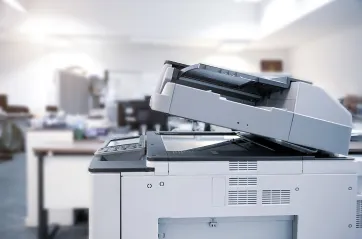BLOG

Overcoming Printer Management Challenges in 2025
Overcoming Printer Management Challenges in 2025
In 2025, printing remains essential for businesses of all sizes—from startups to global enterprises. But managing a print environment, especially across multiple locations, can be a major source of inefficiency, cost overruns, and security vulnerabilities. As hybrid work models continue to evolve, organizations must address several key challenges to keep their printing operations smooth and cost-effective.
Below are some of the top printer management issues facing companies today—and practical strategies to overcome them.
1. Hidden Printing Costs and Lack of Visibility
Most companies underestimate how much they spend on printing. Beyond paper and toner, hidden costs include energy usage, device maintenance, and lost productivity when employees face printer-related issues. These expenses are often spread across departments and locations, making them hard to track.
Solution: Leverage Managed Print Services (MPS)
Managed Print Services can offer detailed reporting and analytics on print usage, helping organizations:
Track costs by department, user, or device
Identify inefficiencies and reduce wasteful habits
Automate supply replenishment
Schedule proactive maintenance
Forecast future printing needs and improve budgeting
According to Gartner, MPS can help reduce printing expenses by up to 30%.
2. Print Security and Compliance Risks
Printers can be a weak point in network security. If not properly secured, they may expose sensitive data and become entry points for cyber threats. This is especially critical in industries with strict compliance requirements like healthcare, finance, and law.
Solution: Choose Devices with Built-In Security Features
Look for multifunction printers that support:
User authentication and secure pull printing
Audit trails and logging
Data encryption and firewall protection
Devices such as Konica Minolta's bizhub series offer robust security and industry certifications to help maintain compliance and protect confidential data.
3. Excess or Obsolete Print Hardware
Many organizations operate with too many printers—or outdated ones—leading to high maintenance costs and IT inefficiencies. Managing a bloated print fleet takes valuable time away from strategic IT initiatives.
Solution: Conduct a Print Fleet Optimization Audit
Streamlining your hardware can:
Eliminate unnecessary devices
Consolidate to energy-efficient models
Reduce overhead and maintenance complexity
Enhance print quality and user experience
4. Environmental Impact
Office printing contributes to deforestation, energy waste, and landfill accumulation. With sustainability becoming a corporate priority, reducing the environmental impact of printing is more important than ever.
Solution: Adopt Eco-Friendly Printing Practices
Working with an environmentally conscious MPS provider can help:
Encourage duplex (double-sided) printing
Implement rule-based printing to limit color and unnecessary jobs
Recycle supplies and responsibly dispose of old equipment
Use energy-saving printers
These steps reduce your carbon footprint and cut down on operational costs—a win-win for business and the planet.
5. Supporting a Hybrid Workforce
As remote and hybrid work models persist, employees need flexible, reliable access to print resources from any location. Traditional, server-based systems often fall short in this regard.
Solution: Move to Serverless Printing Solutions
Serverless printing empowers users to print securely from any device, anywhere—without depending on office servers. Benefits include:
Improved flexibility and scalability
Reduced IT infrastructure and support costs
Easier onboarding for remote workers
6. Inefficient Manual Workflows
Manual printing processes—like document capture, scanning, and tracking—are prone to errors and slowdowns. For large or legacy-heavy organizations, automating these workflows can be a major productivity booster.
Solution: Use Cloud-Based Print Management Software
Modern software solutions can:
Automatically route print jobs
Track usage in real-time
Simplify document scanning and archiving
Improve operational speed and accuracy
This automation enables better decision-making and a more agile, responsive work environment.
Ready to Take Control of Your Print Environment?
Printer management doesn't have to be a headache. By adopting smart technologies and strategies—like MPS, secure devices, eco-friendly practices, and cloud printing—your organization can lower costs, improve efficiency, and support your hybrid workforce in 2025 and beyond.
Copyright © 2024. QLS Solutions Group. All Rights Reserved | Terms & Conditions | Privacy Policy






